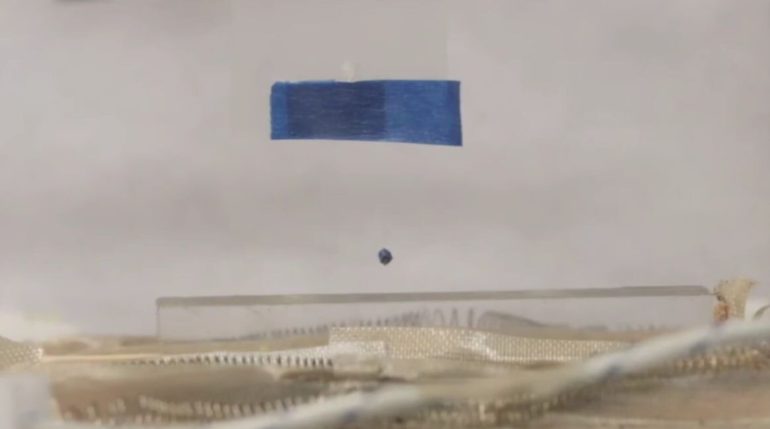A team of researchers at the University of California has developed a way to create an artificial fiber that performs very much like human muscle fibers. In their paper published in the journal Science Robotics, the researchers describe their process and how well the fiber worked when tested.
Scientists have been trying for many years to create an artificial muscle, both to replace muscle lost in human patients and to give human-like qualities to robots. Such efforts have paid off in some respects. Fibers very much like human muscle fibers have been created, but they have suffered from slow response times due to their complex nature. In this new effort, the researchers have developed a process for creating an artificial fiber that has human-muscle type response times.
The new technique involved using a process called electrospinning—a decade’s old process developed for smart textiles and in some cases tissue regeneration. In their approach, the researchers started with a liquid crystal elastomer (LCE), which is a type of polymer. They created a solution containing a small amount of LCE and sucked it into a very small syringe-like apparatus. They then subjected the apparatus to a burst of very high voltage which resulted in the polymer shooting out of the tip of the apparatus as a very thin stream. The stream was directed at a spinning metal mesh that served as a collector. As the stream dried, it formed into an elastic fiber measuring 10 to 100 micrometers in diameter, depending on the size of the hole in the tip of the apparatus. Testing of the fiber showed it to have properties similar to human muscle fibers such as tensile strength, high power density and quick responsiveness. They also found the fiber could be activated (constricted) using either heat or near-infrared light.
The researchers tested the fiber by using it in different real-world type applications. They built micro-tweezers with it, for example, and also used it to direct the movement of a micro-swimming device, a tiny artificial arm and a microfluidic pump. The researchers note that their process is both easy and inexpensive, suggesting it could be used to create fibers for a wide variety of applications.
Scientists develop new type of artificial muscle inspired by DNA supercoiling
More information:
Qiguang He et al, Electrospun liquid crystal elastomer microfiber actuator, Science Robotics (2021). DOI: 10.1126/scirobotics.abi9704
2021 Science X Network
Citation:
Artificial fiber spun from liquid crystal elastomer using electricity performs like human muscle fiber (2021, September 2)
retrieved 3 September 2021
from https://techxplore.com/news/2021-09-artificial-fiber-spun-liquid-crystal.html
This document is subject to copyright. Apart from any fair dealing for the purpose of private study or research, no
part may be reproduced without the written permission. The content is provided for information purposes only.



